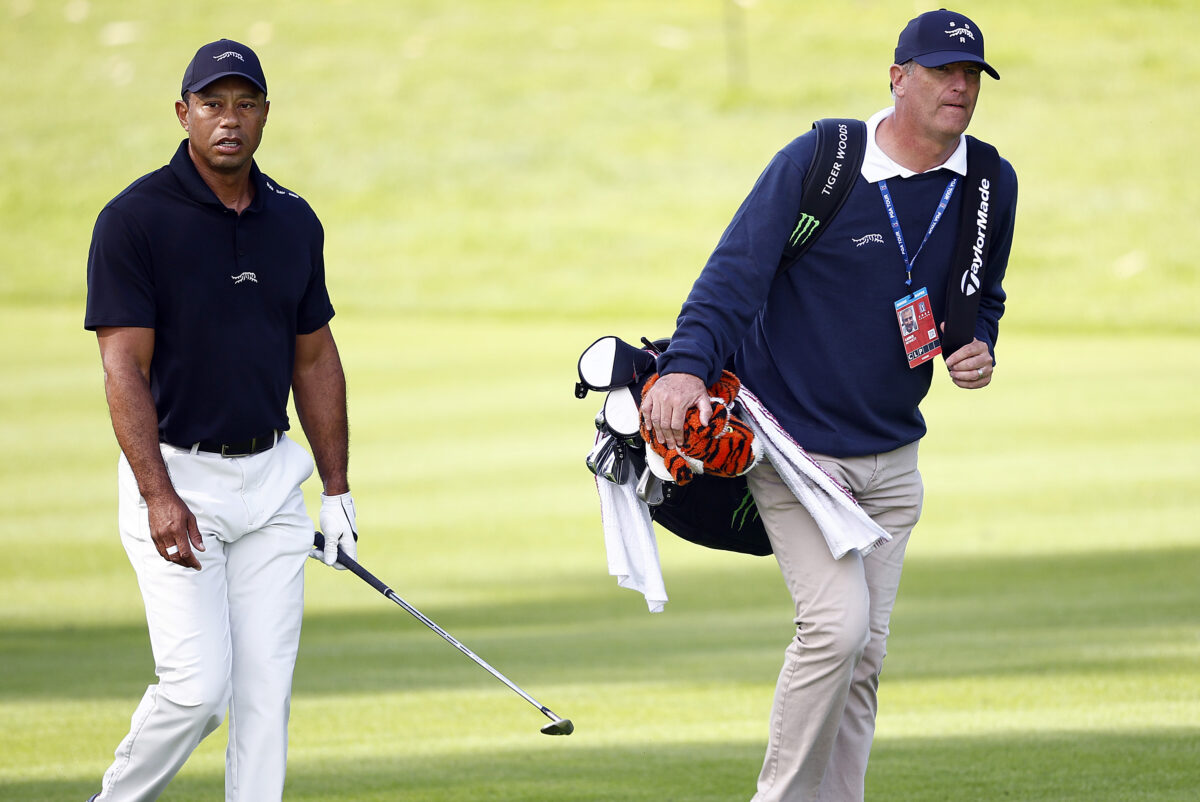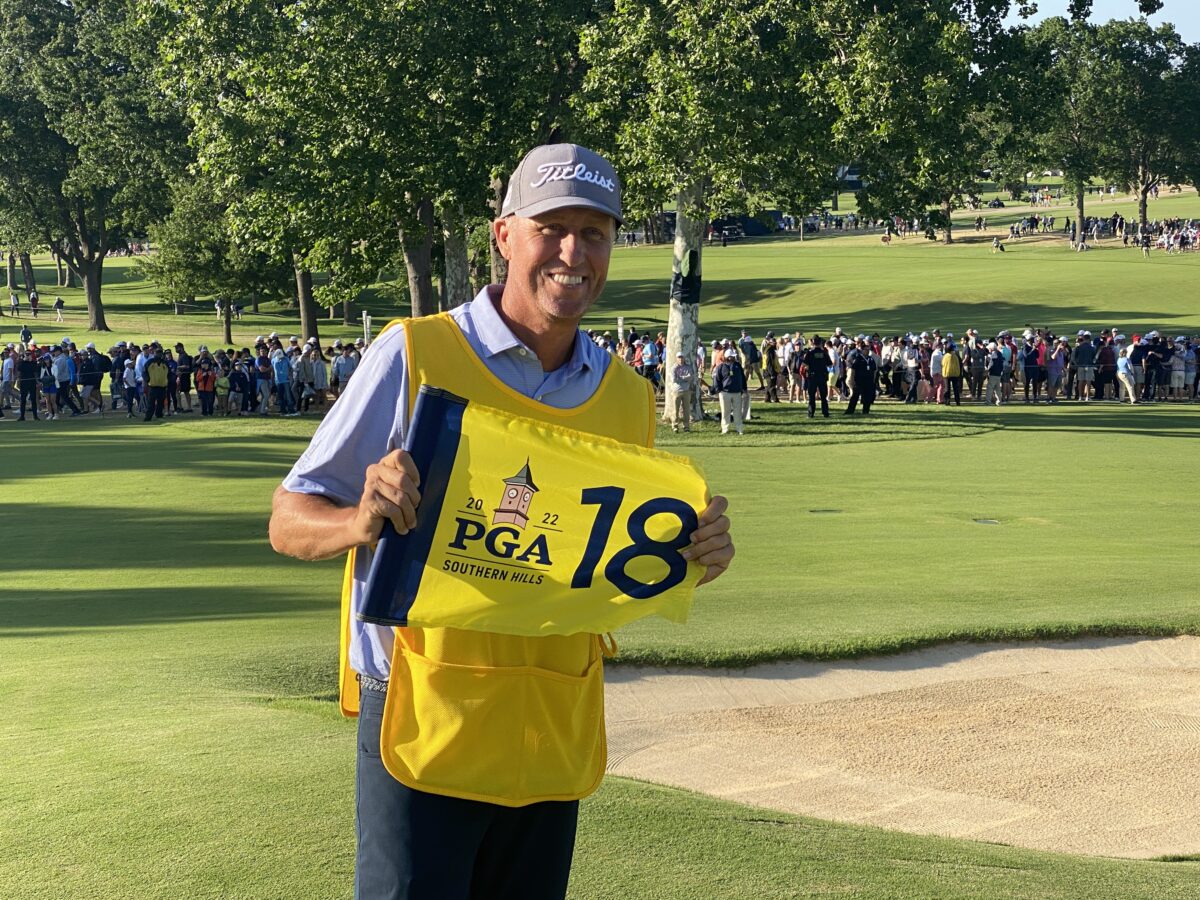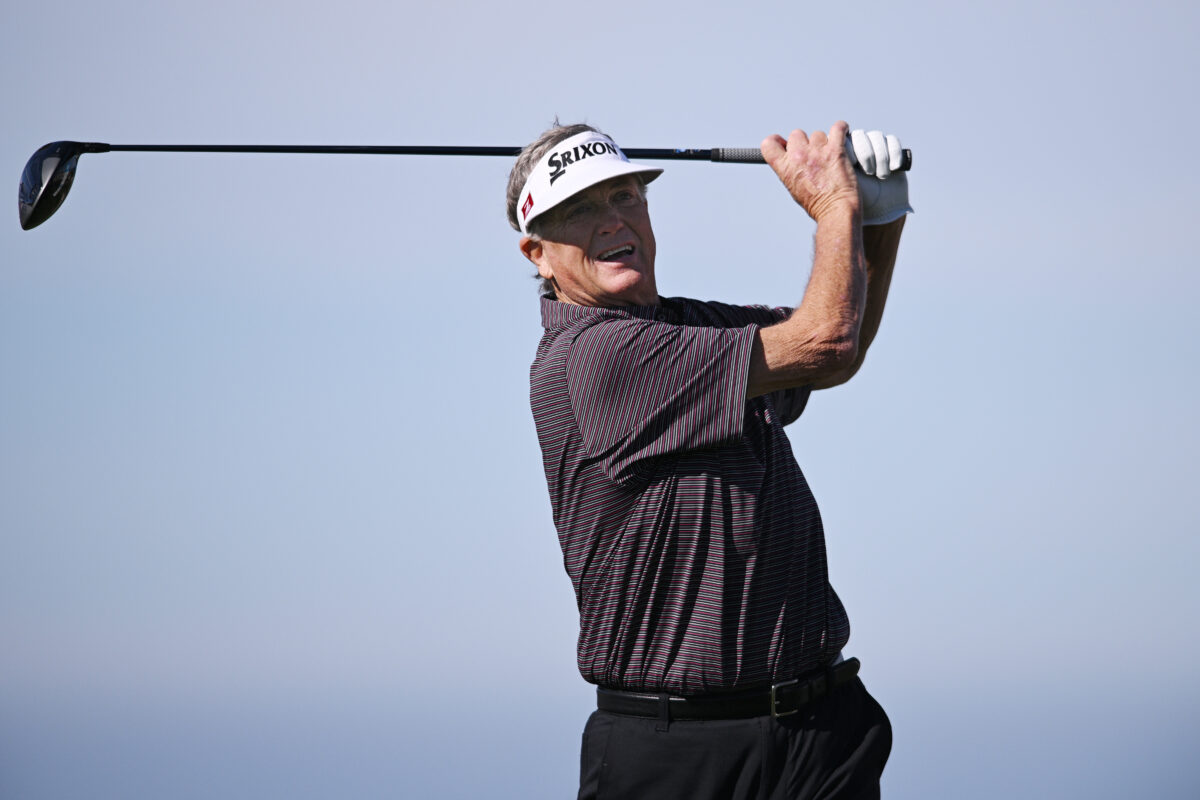After 661 PGA Tour events, seven victories plus two majors on PGA Tour Champions, Peter Jacobsen intends to play one last competitive round on Saturday at Monterey Peninsula Country Club’s Shore Course, wrapping up a pro career that spans six different decades.
“Father Time catches up to us all,” he said. “My gosh, it’s a new game out here. They’ve got these new tees so far back that I’m hitting driver-hybrid to most of these holes. It’s time for me to get back to broadcasting. It’s time to hang the clubs up.”
But not before one last farewell at this week’s AT&T Pebble Beach Pro-Am, where he is making a start for the 32nd time at the event he considers the most important week on the PGA Tour calendar. No one has understood the value of the pro-am format better than Jacobsen, and no one appreciates having one more chance to say goodbye to competitive golf.
Jacobsen, who spends most of his time as a golf TV commentator for NBC/Golf Channel, thought he’d had his PGA Tour swan song at Pebble Beach Golf Links in Pebble Beach, California, in 2018. That’s when his amateur partner, rocker Huey Lewis, talked him into one more spin around the fabled track for old times sake. Originally, they were supposed to play in 2017, but Lewis suffered an ear infection and withdrew so they returned for one final walk together on the hallowed fairways. Leave it to Lewis to woo him back again and then suffer another injury – to his shoulder this time – that forced him to WD. (Jacobsen instead is playing with recording artist Ben Rector.)
But there’s not much arm-twisting involved to make Jacobsen, 67, spend another week in this slice of heaven. The seaside resort community of Pebble Beach is where Jacobsen originally met Arnold Palmer when he accidentally jumped in front of him trying to play a practice round in what became the start of a beautiful friendship. It’s where he formed a longtime partnership with actor Jack Lemmon, who never made the cut, and together were part of the famous “human chain” at the 16th hole at Cypress Point. It’s also where Jacobsen won what he’s termed his most memorable title on the PGA Tour in 1995.
Jacobsen was 22 years old when he made it through PGA Tour Q-School, which back then meant he could play in Monday Qualifiers. That didn’t amount to a hill of beans as he failed to earn a spot in tournaments in Phoenix, Tucson, and Palm Springs to start the 1977 season. Jacobsen arrived at Pebble Beach bound and determined to break his streak and qualify for Der Bingle’s bash. He did just that shooting 70 at Del Monte Golf Course, a score good enough to make the field at what was then known as the Bing Crosby Pebble Beach National Pro-Am. He’d finally arrived.
So, Jacobsen headed over to Monterey Peninsula Golf Club, which was part of the course rotation at the time, and toured the back nine as the sun set in the Pacific. After playing No. 12, he cut over to the 16th hole, which led to an unforgettable moment.
Tee times, TV info | ESPN+ streaming info | Leaderboard
“Everything in the world seemed as though it couldn’t get better when my concentration is broken by the sound of footsteps. Lots of them. Suddenly, somewhere in the neighborhood of 400 people round the corner from the 15th green to the 16th tee traipsing after none other than Arnold Palmer. He was larger than life to me. That’s when it hit me that I had committed a rookie mistake and jumped in front of him during his practice round,” Jacobsen recalled.
What did The King do when he approached Jacobsen, a mere peasant at the time in the world of golf?
“I envisioned he would say something like, ‘Hey, rookie, get out of the way!’ Heroes, they say, generally disappoint. But not Arnold. He stuck out his hand and said, ‘Hi, I’m Arnold Palmer. Can I join you?’” Jacobsen recalled.
When they finished, Jacobsen remained on the putting green at the 18th hole and turned to his caddie and said, “Now that was magic right there.”
On the bag this week is none other than Mike “Fluff” Cowan, Jacobsen’s caddie for 18 years until he joined Tiger Woods when he turned pro in 1996. Jacobsen and Fluff first met at Silverado Country Club in Napa, California, in the fall of 1977.
“He looked like a cross between Grizzly Adams and Jerry Garcia,” Jacobsen said. “He introduced himself and said he was impressed with my game.”
Fluff didn’t start packing for Jacobsen until the following spring at the Heritage Classic, and together they won six of Jacobsen’s seven titles. With Fluff’s longtime boss Jim Furyk taking the week off, Jacobsen put the old band back together.
“It’s like old home week,” Jacobsen said.
Pebble Beach is one of his favorite places on Earth – he played the AT&T consecutively from 1979 to 2008 – and he’s long been a proponent of the pro-am as the lifeblood of the Tour.
“Our greatest salesmen are not living in Ponte Vedra [Beach, Fla.] at Tour headquarters; they are playing inside the ropes,” Jacobsen told me in 2018 for a story that appeared on Morning Read. “I don’t care how many fancy food carts they put on the tee and how many gift bags you give amateurs. The greatest asset of the PGA Tour is its players.”
Jacobsen was able to take a farewell tour this week as a past champion. In 1995, he played 36 bogey-free holes at Pebble, including a flawless 65 on Sunday, to edge David Duval for the title.
“Some of the best golf I’ve ever seen,” Fluff said. “Peter hit 69 out of 72 greens that week at Pebble, Spyglass, and Poppy Hills.”
Having been through a hip replacement and other surgeries, Jacobsen’s body won’t allow him to compete on PGA Tour Champions let alone against the flat bellies. He’s pulling up the rear, signing for 81 at Spyglass on Thursday and a respectable 76 at Pebble Beach on Friday, which included finishing with a birdie at 18 at the place where it all began. Not too shabby for a guy who teed it up this week without any grand illusions. Not everybody gets to go out on his own terms, but this week Jacobsen gets to say goodbye in style.
“It’s been a dream,” he said speaking of his send off, but he might as well have been referring to his long journey through the ranks of professional golf. “It’s been fantastic.”
[mm-video type=playlist id=01es6rjnsp3c84zkm6 player_id=01evcfxp4q8949fs1e image=https://golfweek.usatoday.com/wp-content/plugins/mm-video/images/playlist-icon.png]





